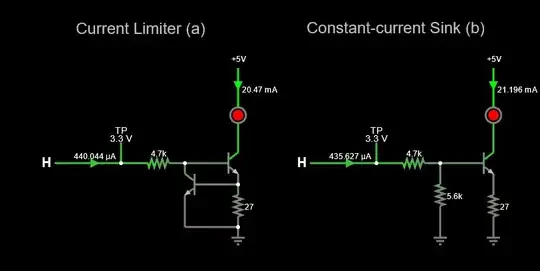I am trying to build a circuit design that has 4 LEDs that will need more current than the ATmega328 can give out. I will want the LEDs in parallel so I can control them all individually. Because they are higher current LEDs, I will be using a simple constant current driver using a transistor, FET, and resistor. I have attached the link below for reference. The problem is that I will need 1 current driver per LED. This will add cost and space on my PCB. I am wondering if anyone can help me figure out a way to simplify this down so I can keep the cost down and have my PCB take up less space.
Constant Current Driver: http://lednique.com/power-supplies/simple-constant-current-driver/
